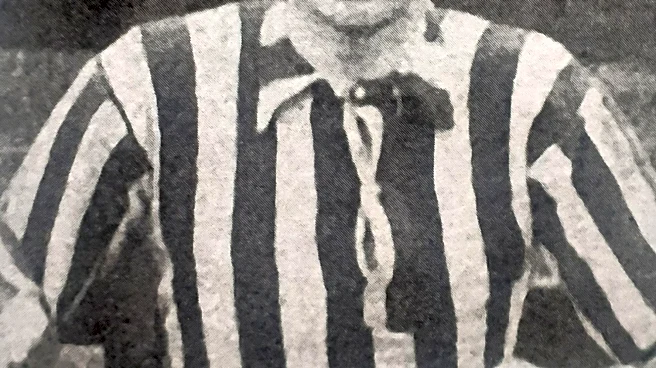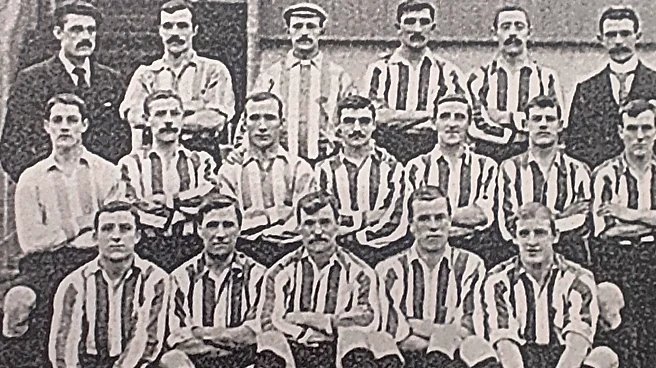
His tragic death might’ve taken place over a century ago now, but local boy Arnie Davison will forever be a part of Sunderland AFC folklore.
Red and white stripes are now synonymous with the club, and yet in September 1887, the Lads took to the field in them for the first time — with Davison becoming to first player to score in the now iconic garb during a game against Darlington St Augustine’s. The strips have since gone on to weave their way into the Wearside psyche, yet Davison was already a well-established
favourite, having played during the years previous when the team wore halved shirts.
A highly skilled player and a ‘bright and cheery’ fellow, Davison was a popular figure.
He made well over one appearances for his hometown club, although many of these were in minor competitions or friendlies so were not recorded as official first team outings. Nevertheless, his red and white delight wasn’t his only achievement, as he scored the winning goal in the 1887 Durham Challenge Cup final, won county representative honours and regularly got goals against sides from the Football League.
When Tom Watson was brought in as secretary/manager ahead of 1889/1890, several of the predominantly local old guard were discarded however for new names from Scotland. Davison, who usually played on the right wing, did start Watson’s first game in charge but was told to play in a slightly more central role, and come the next fixture he too was out of the team altogether.

He did make it back into the first team briefly, featuring in October and November as South Bank and Birmingham St George’s were seen off, but many of supporters were already unhappy by his ‘shelving’ — so much so that a group of anonymous club members had decided to send a heartfelt letter of support for Davison to the Sunderland Daily Echo and Shipping Gazette.
The letter was then backed up by another member who told the paper’s ‘Letter Bag’ that they “most cordially supported the five members in their complaint re Arnie Davison, and think it is anything but credible to the committee that they should allow themselves to be governed in this matter other than by their own judgement”.
The general sentiment was that the fan favourite shouldn’t have been expected to make way for newcomers — some of whom were felt to be inferior — without being given a fair chance to show what he could do first, particularly after performing at such a high standard for so long, although it seems as if there may have been another factor at play.
Lionel Wolfe, a hugely committed supporter who would eventually become a director at Sunderland, later recalled that Davison hadn’t been ‘enjoying the best of health’ at this point, despite only being in his mid-twenties.
Living in Monkwearmouth at the time, he continued working as a shipyard clerk once his senior footballing days were over until a progressively debilitating spinal condition forced him into Sunderland Workhouse. Destitute and wheelchair-bound, he was there for over a decade before he died on this day aged only 46.
Davison had been a handy rugby player before taking up football and representing Monkwearmouth Workmen’s Hall. It was while playing for them that he got spotted by Sunderland, the fledgling club where he made his name and is still remembered generations later.











